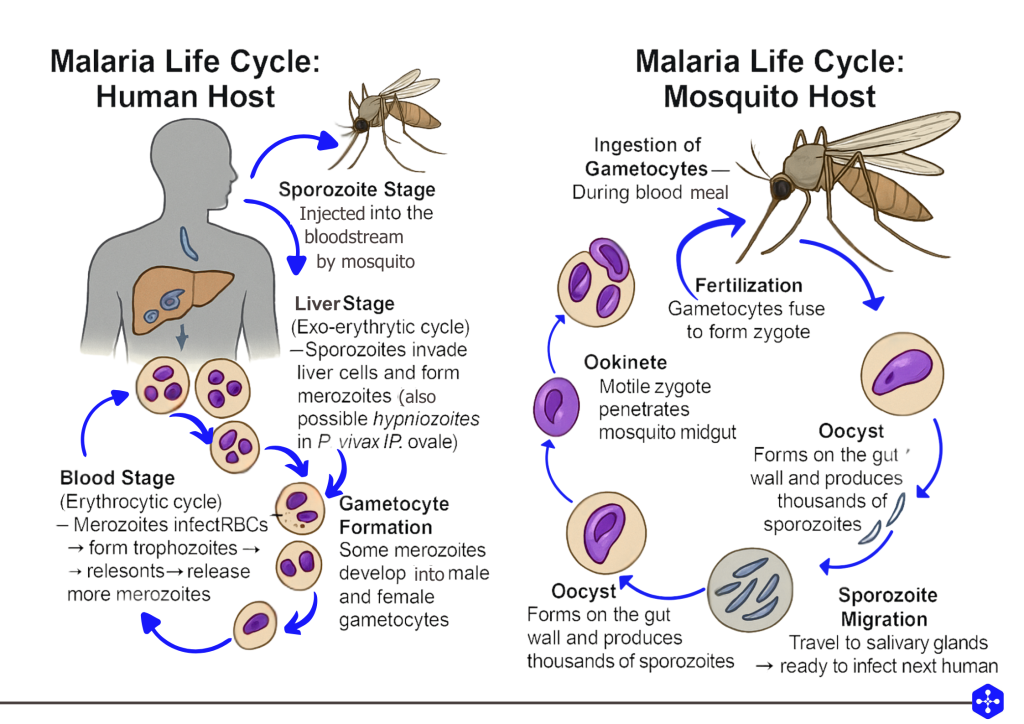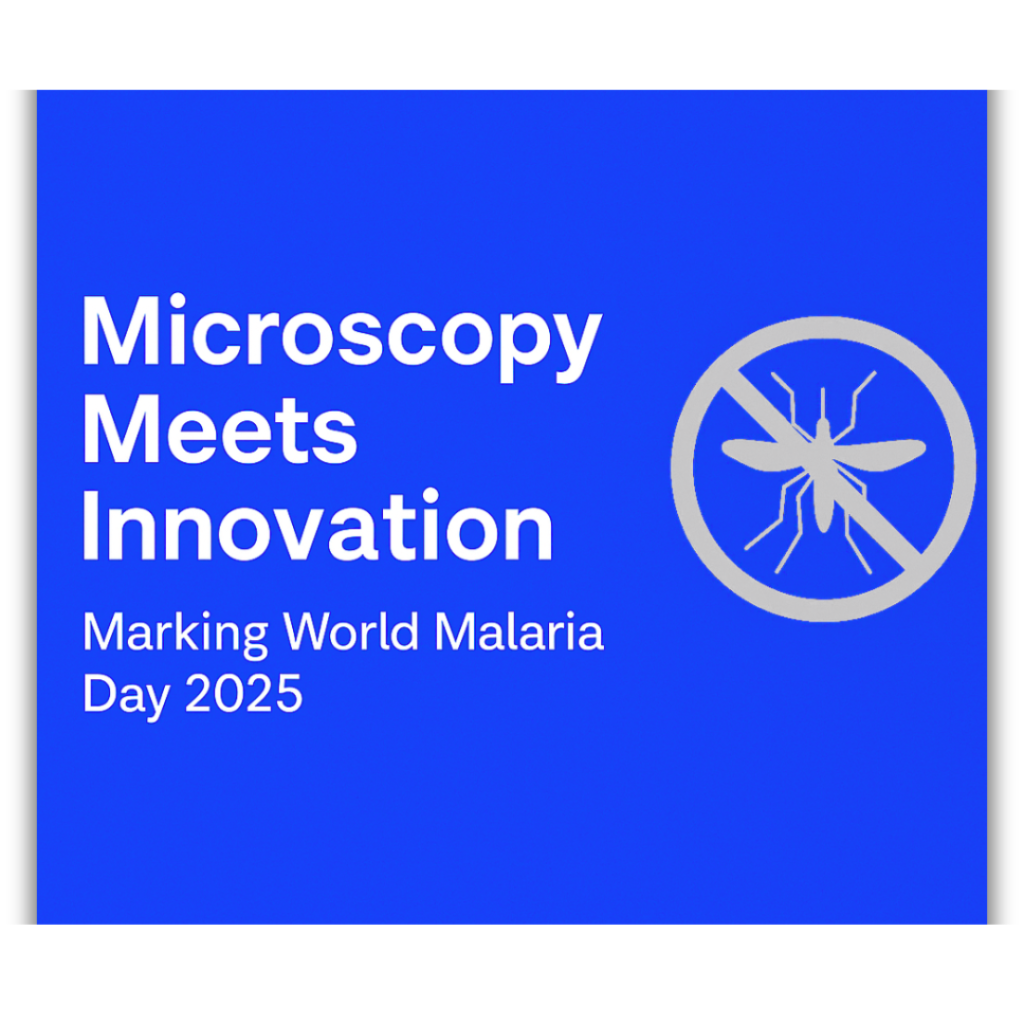Every year on April 25, the world unites to observe World Malaria Day a moment to reflect, reignite and reimagine our global efforts to eradicate one of the deadliest mosquito-borne diseases in history. This year’s theme, “Malaria Ends With Us: Reinvest, Reimagine, Reignite,” invites us to take bold steps forward. At Medprime Technologies, we believe the future of malaria elimination begins with innovation in diagnosis.
What is Malaria?
Malaria is a life-threatening disease caused by Plasmodium parasites, which are transmitted to people through the bites of infected female Anopheles mosquitoes. There are five parasite species that cause malaria in humans, with Plasmodium falciparum and Plasmodium vivax being the most common and dangerous.
How Does Malaria Affect the Body?
Once inside the body, the parasites travel to the liver where they mature and multiply. After leaving the liver, they infect red blood cells, leading to symptoms such as fever, chills, headache, nausea, vomiting, muscle pain, and fatigue. In severe cases, malaria can cause complications such as cerebral malaria, organ failure, anemia, and even death if not treated promptly.

The Malaria Parasite Lifecycle Inside the Human Body
- Infection Begins: The cycle starts when an infected mosquito bites a human and injects Plasmodium sporozoites into the bloodstream.
- Liver Stage: These sporozoites travel to the liver within 30 minutes and invade liver cells. Here, they multiply asexually and form thousands of merozoites. Some species, like P. vivax and P. ovale, may also form dormant hypnozoites that can reactivate later.
- Blood Stage: Merozoites are released from liver cells into the bloodstream, where they invade red blood cells. Inside the RBCs, they undergo further asexual reproduction. The infected cells eventually burst, releasing more merozoites to continue the cycle, causing symptoms like fever and chills.
- Sexual Stage (Gametocytes): Some merozoites develop into sexual forms called gametocytes, which circulate in the blood.
- Mosquito Infection: When another mosquito bites the infected person, it ingests these gametocytes, which then undergo sexual reproduction in the mosquito’s gut, producing new sporozoites. These migrate to the mosquito’s salivary glands, ready to infect the next person it bites.
Understanding this lifecycle underscores the urgency for early detection and intervention before the parasites multiply and symptoms escalate.
How is Malaria Diagnosed?
Accurate diagnosis is crucial for effective malaria treatment. There are several methods for detecting malaria:
- Microscopy: A blood smear is examined under a microscope to identify the presence of malaria parasites. This method is widely used and remains a gold standard for malaria diagnosis.
- Rapid Diagnostic Tests (RDTs): These are immunochromatographic tests that detect specific malaria antigens in a small amount of blood. While they are quicker, they may be less sensitive than microscopy in low-parasite conditions.
- Molecular Methods (PCR): Highly sensitive techniques that detect parasite DNA, used mostly in research and specialized settings.
The Microscopic Truth About Malaria
While RDTs and PCRs have their benefits, microscopy remains an indispensable tool in the diagnostic process. It not only confirms the presence of malaria but also helps determine the parasite species and parasitemia level, which is critical for treatment decisions. However, traditional microscopy requires skilled technicians and infrastructure that may not be available in remote or low-resource areas.
Digitizing Diagnosis: A Game-Changer
Digitizing the diagnostic process transforms how malaria is detected and monitored. Digital microscopes enable healthcare workers to capture high-resolution images of blood smears, which can be stored, shared, and analyzed instantly. This eliminates the dependency on having a trained pathologist on-site and ensures that even remote clinics can access expert opinions in real time.
These digital microscopes often come equipped with features like:
- Real-time telepathology support for remote consultations
- Streamlined archiving and reporting workflows
- High image quality for accurate assessments
Such digital microscopes ensure that patients receive quicker and more reliable diagnoses, especially in resource-limited settings. Moreover, data collected from digital diagnostics can support public health surveillance and help track outbreaks more effectively.
The Role of AI in Malaria Detection
Artificial Intelligence takes digitized diagnostics a step further by automating the detection process. Machine learning models can be trained using thousands of annotated blood smear images to recognize and classify malaria parasites.
Here’s how AI contributes:
- Speed: AI can screen slides rapidly, flagging potential positives for human review.
- Accuracy: It reduces the likelihood of human error and maintains consistent performance across different healthcare settings.
- Scalability: AI-powered systems can handle large volumes of diagnostic samples, especially useful during outbreaks or in high-burden regions.
AI assists in not just identifying parasites, but also estimating parasitemia levels, and differentiating between Plasmodium species, all of which inform treatment decisions. When integrated into advanced digital scanners that support whole-slide imaging and automation, AI becomes a powerful tool in the global fight against malaria.
Fighting Malaria Where It Begins
Early detection and timely treatment are key to breaking the transmission cycle of malaria. By equipping frontline workers with digital diagnostic tools, we empower them to intervene faster, treat effectively, and report cases in real time a step forward in global malaria surveillance and control.
At Medprime Technologies, our mission is to innovate with purpose. We are committed to reinvesting in solutions that transform traditional microscopy into smart, digital, and collaborative tools. Whether it’s through our portable digital microscopes or our advanced whole-slide scanner with integrated imaging and automation, our goal is to make diagnostics accessible, scalable, and future-ready.
On this World Malaria Day, let us remember: the end of malaria starts with awareness, action, and access to the right tools. With the power of digital microscopy and the promise of AI, a malaria-free world is within reach. Together, let’s reimagine diagnosis and reignite our commitment to global health.
